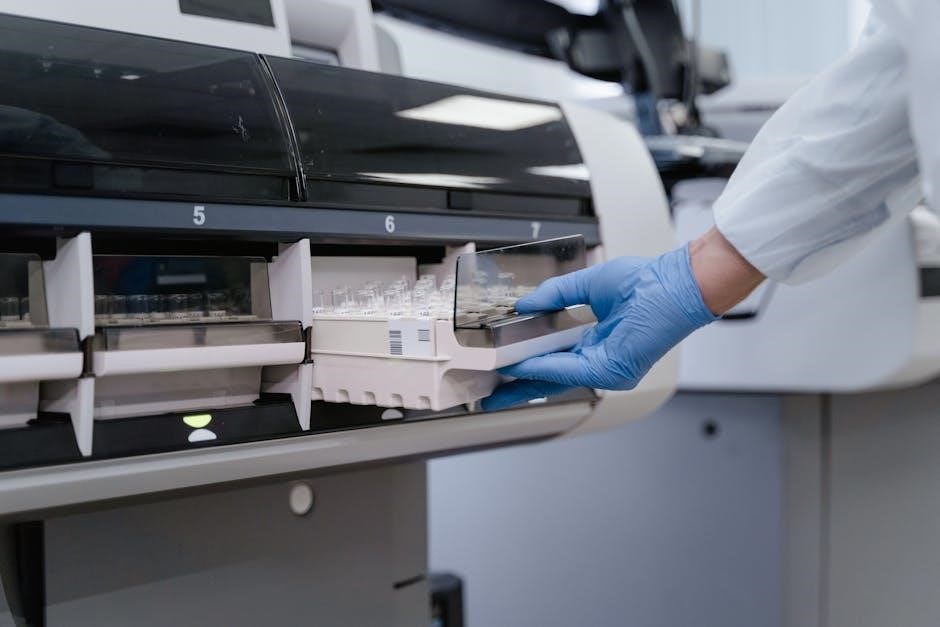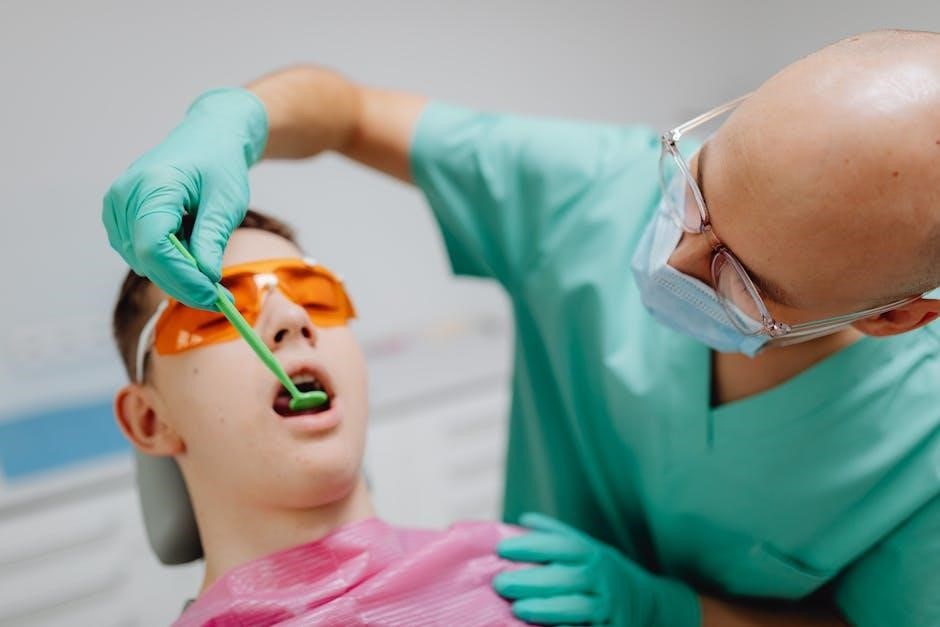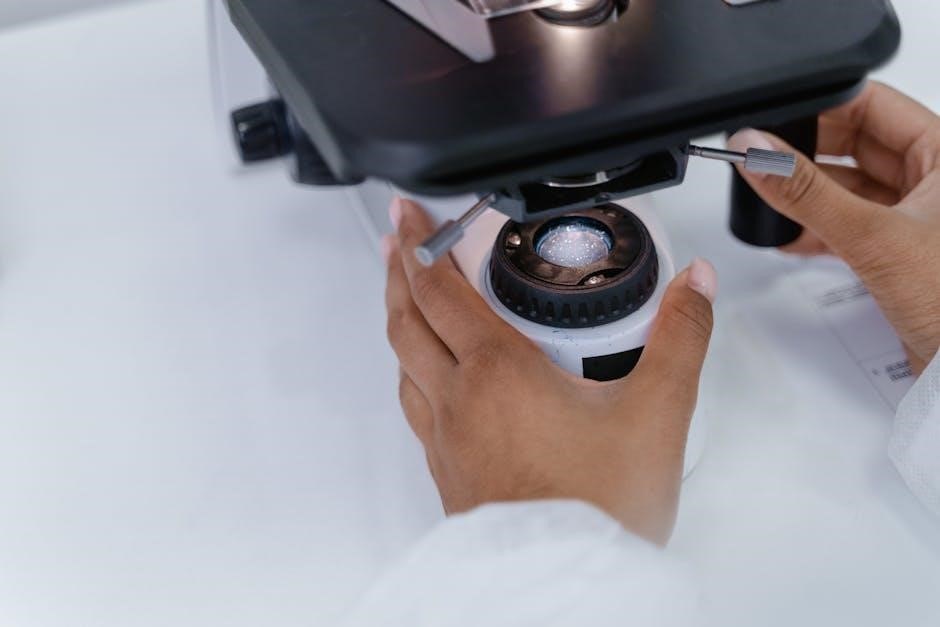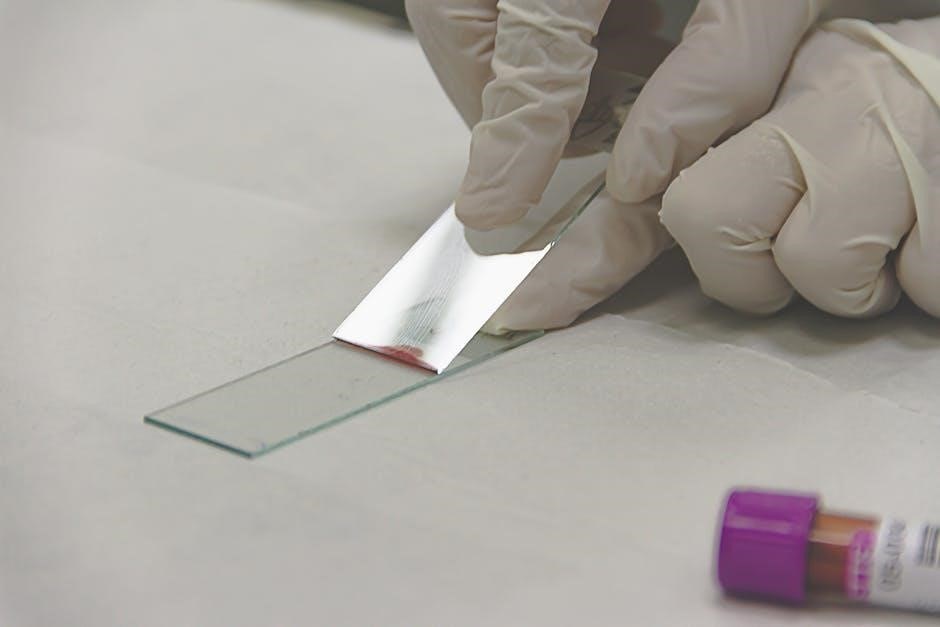A well-crafted medical assistant resume is essential for standing out in the competitive healthcare job market. PDF samples provide a professional format and structure, making it easier to showcase your skills, experience, and certifications. By using customizable templates, you can create a polished resume that highlights your qualifications and aligns with industry standards, ensuring ATS compatibility and visual appeal.
1.1 Importance of a Well-Structured Resume
A well-structured resume is crucial for medical assistants to showcase their qualifications effectively. It ensures clarity, professionalism, and alignment with industry standards. A clear format helps hiring managers quickly identify relevant skills, certifications, and experience, increasing the likelihood of landing an interview. Properly organized sections, such as the objective statement, skills, and work experience, demonstrate attention to detail and professionalism. Additionally, a well-structured resume improves ATS compatibility, ensuring your application is seen by employers. Investing time in creating a polished resume is essential for making a strong first impression in the competitive healthcare job market.
1.2 Benefits of Using PDF Samples
Using PDF samples for medical assistant resumes offers numerous benefits. PDF formats ensure consistency and professional presentation, preventing formatting issues when viewed on different devices. They provide a clear structure, guiding you to highlight essential sections like skills, certifications, and work experience. PDF samples also enhance visual appeal, making your resume more readable and polished. Additionally, they are easily downloadable and shareable, allowing you to quickly apply to multiple positions. By leveraging these templates, you can create a standout resume that aligns with industry standards and captures the attention of hiring managers.

Key Sections of a Medical Assistant Resume
A medical assistant resume should include essential sections like an objective statement, skills showcase, work experience, education, certifications, and achievements. These sections highlight qualifications and professionalism.
2.1 Objective Statement
The objective statement is a concise introduction that highlights your career goals and relevant skills. It should align with the job description, showcasing your passion for healthcare and readiness to contribute effectively. Tailor this section to emphasize your medical assisting skills, such as patient care, administrative tasks, or clinical procedures. Use action verbs and specific terms to demonstrate your expertise. For example, “Dedicated medical assistant seeking to leverage clinical and administrative skills in a dynamic healthcare setting.” This statement sets the tone for your resume and grabs the employer’s attention immediately.
2.2 Skills Showcase
The skills section is a critical part of your medical assistant resume, highlighting your clinical and administrative expertise. Include relevant skills such as taking vital signs, preparing exam rooms, or managing electronic health records (EHRs). Administrative skills like scheduling appointments or handling patient records are also essential. Use bullet points for clarity and ensure ATS compatibility by incorporating industry-specific keywords. Tailor your skills to the job description, emphasizing certifications like Certified Medical Assistant (CMA) or Registered Medical Assistant (RMA). This section should clearly demonstrate your ability to perform both clinical and office tasks effectively, making you a well-rounded candidate.
2.3 Work Experience
Your work experience section should detail your roles and responsibilities as a medical assistant, focusing on clinical and administrative tasks. Highlight specific achievements, such as improving patient flow or reducing wait times. Use action verbs like “administered,” “assisted,” or “managed” to describe your duties. Quantify accomplishments by including numbers, like “assisted 50+ patients daily.” Tailor your experience to the job description, emphasizing relevant skills and certifications. Ensure consistency in formatting and ATS compatibility by using clear, concise language. This section is crucial for demonstrating your hands-on experience and contribution to healthcare settings.
2.4 Education and Certifications
Your education and certifications are vital for establishing credibility as a medical assistant. Include your degree or diploma, institution name, and graduation dates. Highlight certifications like Certified Medical Assistant (CMA) or Registered Medical Assistant (RMA). List relevant coursework or specialized training. Tailor this section to the job description, emphasizing certifications that align with the employer’s requirements. Ensure clarity and ATS compatibility by using a clean format. This section demonstrates your qualifications and commitment to professional development in the healthcare field.
2.5 Achievements and Awards
Including achievements and awards enhances your resume by showcasing your exceptional contributions and recognition in the field. Mention any accolades, such as “Employee of the Month” or “Clinical Excellence Award.” Quantify achievements, like “Improved patient satisfaction scores by 25% through efficient care coordination.” Highlight any leadership roles or innovative practices you’ve implemented. This section demonstrates your dedication and ability to excel, making you a standout candidate. Tailor these accomplishments to align with the job description, ensuring relevance and impact.

Professional Format and Layout
A professional format ensures clarity and readability, making it easy for hiring managers to assess your qualifications. Use clean designs, readable fonts, and clear section headings to enhance visual appeal. Incorporate bullet points for concise information and ensure ATS compatibility by avoiding excessive graphics. A well-structured layout balances aesthetics with professionalism, helping your resume stand out.
3.1 Choosing the Right Template
Selecting the right template is crucial for creating a professional medical assistant resume. Opt for ATS-friendly designs that are clean and modern, ensuring compatibility with applicant tracking systems. Choose templates that highlight key sections like skills, certifications, and work experience. Ensure the design is tailored to the healthcare industry, reflecting professionalism and readability. Avoid overly elaborate designs that may distract from your qualifications. Instead, focus on templates that balance aesthetics with functionality, making it easy for hiring managers to scan your resume efficiently. Tailor the template to align with the job description, showcasing your strengths effectively.
3.2 Ensuring ATS Compatibility
Ensuring your medical assistant resume is ATS-compatible is vital for getting past automated screening systems. Use standard fonts like Arial or Calibri and avoid overly decorative templates. Save your resume in ATS-friendly formats such as PDF or Word (.docx). Avoid graphics, tables, or columns, as they can confuse ATS algorithms. Include relevant keywords from the job description, especially medical terminology and certifications. Use consistent formatting for headings and bullet points. Properly label sections like “Work Experience” and “Education” to ensure ATS systems can parse your information accurately. This ensures your resume is both professional and machine-readable.
3.3 Visual Appeal and Readability
A visually appealing and readable resume is crucial for making a strong first impression. Use a clean, professional layout with ample white space to avoid clutter. Choose standard fonts like Arial or Calibri in sizes 10-12 points for readability. Utilize bullet points to present information clearly and concisely. Ensure consistent formatting for headings, dates, and descriptions. Avoid overly decorative elements or bright colors, as they can distract from the content. Proper alignment and spacing will make your resume easy to scan, both by hiring managers and ATS systems. This balance of aesthetics and clarity enhances professionalism and ensures your qualifications stand out.

Customizable Templates
Downloadable PDF templates and editable Word formats allow for easy customization, ensuring your resume meets industry standards and stands out to employers with a professional appearance.
4.1 Downloadable PDF Templates
Downloadable PDF templates offer a professional and polished format for your medical assistant resume. These templates are pre-designed with sections for your objective, skills, work experience, and education, ensuring clarity and organization. PDF formats are widely compatible and maintain their layout across different devices. Many websites provide free or customizable PDF templates tailored for medical assistants, allowing you to highlight your qualifications effectively. By using a PDF template, you can create a visually appealing resume that captures the attention of hiring managers and aligns with industry standards for a professional appearance.
4.2 Editable Word Formats
Editable Word formats provide flexibility and customization options for your medical assistant resume. These templates allow you to personalize sections such as the objective, skills, and work experience to match your specific qualifications. Word documents are easy to modify, ensuring your resume aligns with the job description. Additionally, they can be saved as PDFs for a professional finish. Many websites offer free or premium editable Word templates designed for medical assistants, enabling you to create a tailored and polished resume that stands out to employers while maintaining a clean and organized layout.
4.3 ATS-Friendly Designs
ATS-friendly designs ensure your medical assistant resume is compatible with Applicant Tracking Systems (ATS) used by employers. These templates use simple, clean layouts and standard fonts to improve readability. They avoid complex graphics and focus on clear sections like Skills and Work Experience. By incorporating relevant keywords from job descriptions, ATS-friendly resumes increase the chances of passing through automated screenings. This ensures your application reaches hiring managers while maintaining a professional and polished appearance. Tailored to industry standards, these designs balance functionality and aesthetics, helping you stand out in a competitive job market.

Entry-Level Medical Assistant Resume
Highlight education, training, and internships to showcase foundational skills. Emphasize transferable skills and hands-on experience, even without extensive work history, to demonstrate readiness for entry-level roles.
5.1 Highlighting Education and Training
For entry-level medical assistants, education and training are paramount. Include your medical assistant program, diploma, or certification details, such as the institution and graduation date. Highlight any clinical rotations or internships that provided hands-on experience. Mention specific courses or skills gained, like phlebotomy or EKG training. Use action verbs to describe your mastery of clinical and administrative tasks. If applicable, note any honors or academic achievements. Ensure the education section aligns with the job description to demonstrate readiness for the role. This focus helps employers see your foundational qualifications clearly.
5.2 Emphasizing Transferable Skills
Highlighting transferable skills is crucial for entry-level medical assistants, as they may lack direct work experience. Showcase skills like patient interaction, record-keeping, and time management, which are valuable in healthcare settings. Mention any relevant experience from internships, such as taking vital signs or preparing exam rooms. Use action verbs like “assisted,” “documented,” and “coordinated” to demonstrate your capabilities. Include technical skills like phlebotomy or EKG training, and emphasize strong communication and organizational abilities. Tailor these skills to match the job description, ensuring employers see your readiness to contribute effectively in a clinical environment.
5.3 Including Relevant Internships
For entry-level medical assistants, internships are invaluable for showcasing hands-on experience. Highlight clinical internships where you gained practical skills, such as assisting with patient exams or administering injections. Include the internship title, clinic name, location, and duration. Use action verbs like “assisted,” “monitored,” and “documented” to describe your role. Quantify achievements, such as “interacted with 50+ patients daily” or “prepared 20 exam rooms.” Tailor the details to align with the job description, demonstrating your readiness to transition into a professional medical assistant role effectively.

Experienced Medical Assistant Resume
Highlighting internships in your medical assistant resume demonstrates practical experience and skill development. Include the internship title, healthcare facility, and duration. Describe hands-on tasks like patient intake, vital sign measurement, and assisting with procedures. Use action verbs such as “assisted,” “monitored,” and “documented” to illustrate your role. Quantify achievements, like “supported 20+ patient exams weekly” or “prepared 15 exam rooms daily.” Tailor internship details to align with the job description, showcasing your readiness to apply learned skills in a professional setting and transition smoothly into a medical assistant role.
6.1 Showcasing Clinical Experience
Experienced medical assistants should emphasize their clinical experience by detailing specific patient care responsibilities. Highlight tasks such as conducting patient intake, administering injections, and assisting with procedures. Include the number of patients managed daily and any specialized clinical skills, like phlebotomy or EKGs. Quantify achievements, such as “supported 50+ patient exams monthly” or “maintained a 95% patient satisfaction rate.” Tailor your experience to the job description, ensuring alignment with the employer’s needs. Use action verbs like “administered,” “monitored,” and “documented” to create a strong, results-driven narrative that showcases your clinical expertise and readiness for advanced roles.
6.2 Quantifying Achievements
Highlighting measurable accomplishments strengthens your resume by demonstrating the impact of your work. Include statistics like “reduced patient wait times by 30%” or “processed 50+ lab results daily.” Quantify achievements such as “conducted 200+ patient intake interviews” or “administered 100+ vaccinations monthly.” Use action verbs like “optimized,” “improved,” and “increased” to showcase efficiency and results. Tailor these metrics to align with the job description, emphasizing how your contributions improved patient care or operational efficiency. This approach highlights your value and readiness for advanced clinical roles, making your resume stand out to hiring managers.
6.3 Advanced Certifications
Advanced certifications significantly enhance your credibility as an experienced medical assistant. Highlighting certifications like Certified Medical Assistant (CMA) or Registered Medical Assistant (RMA) showcases your expertise. Include specialized certifications such as phlebotomy, EKG/ECG, or injection administration to demonstrate advanced skills. Mentioning certifications like Certified Clinical Medical Assistant (CCMA) or Certified Phlebotomy Technician (CPT) further validates your proficiency. Ensure these certifications are prominently displayed, as they align with employer expectations and reflect your readiness for senior roles in clinical settings.

Tips for Writing a Standout Resume
A polished, professional resume is crucial for making a strong impression. Highlight key skills, certifications, and experiences. Use action verbs, ensure clarity, and tailor your resume to the job description while avoiding common errors like typos and irrelevant information.
7.1 Using Action Verbs
Using strong action verbs in your resume enhances readability and professionalism. Verbs like “administered,” “conducted,” and “managed” effectively convey your responsibilities and achievements. For example, instead of saying “responsible for patient care,” use “provided direct patient care” or “assisted with diagnostic procedures.” Specific verbs like “recorded,” “prepared,” and “coordinated” highlight your hands-on experience. This approach makes your resume more dynamic and helps hiring managers quickly identify your skills and contributions. Incorporating action verbs also improves ATS compatibility, ensuring your resume stands out in automated systems. Tailor your verb choices to match the job description for maximum impact.
7.2 Tailoring to the Job Description
Tailoring your resume to the job description is crucial for catching the hiring manager’s attention. Carefully review the job posting and incorporate keywords related to the role, such as “patient intake,” “vital signs,” or “electronic health records.” Emphasize relevant experience and skills that align with the position. For example, if the job emphasizes administrative duties, highlight your clerical skills like scheduling appointments or managing records. Customizing your objective statement and skills section to mirror the job description ensures your resume is seen as a perfect fit. This targeted approach increases your chances of passing ATS filters and impressing hiring professionals.
7.3 Avoiding Common Mistakes
When crafting your medical assistant resume, avoid common pitfalls that can harm your chances of landing an interview. Steer clear of generic statements and ensure your resume is free of spelling and grammatical errors. Avoid using overly casual language or unrelated job experience. Instead, focus on action verbs and quantifiable achievements. Tailor your resume to the job description and avoid submitting the same resume for every application. Ensure proper ATS compatibility by using simple formatting and avoiding excessive graphics. Finally, always proofread your resume multiple times to catch any overlooked mistakes before submission.

Industry-Specific Resume Examples
Medical assistant resume samples are tailored for different healthcare settings, such as hospitals, physician offices, and specialty clinics. Each example highlights industry-specific skills and experiences, ensuring alignment with job demands and employer expectations.
8.1 Hospital Settings
Hospital-specific medical assistant resumes emphasize clinical skills, such as patient intake, vital sign monitoring, and assisting with procedures. Highlight teamwork, EHR proficiency, and emergency response experience. Use action verbs like “monitored,” “assisted,” and “documented” to quantify achievements. Ensure ATS compatibility by including hospital-relevant keywords like “acute care” or “inpatient settings.” Showcase certifications like CPR or phlebotomy to demonstrate readiness for fast-paced environments. Tailor your resume to reflect the hospital’s mission and values, ensuring alignment with their operational needs. Download customizable PDF templates to present a polished, professional image tailored to hospital settings.
8.2 Physician Offices
Medical assistant resumes for physician offices should highlight both administrative and clinical skills. Emphasize responsibilities like scheduling appointments, managing patient records, and preparing exam rooms. Showcase abilities in taking vital signs, administering injections, and assisting with minor procedures. Include certifications like Certified Medical Assistant (CMA) or Registered Medical Assistant (RMA) to demonstrate professionalism. Tailor your resume to reflect strong interpersonal skills, as patient interaction is key in office settings. Use action verbs like “coordinated,” “documented,” and “assisted” to describe your roles. Ensure ATS compatibility by incorporating keywords like “patient care” or “clinical support.” Download PDF templates to create a polished, office-specific resume that stands out.

8.3 Specialty Clinics
Medical assistant resumes for specialty clinics require a focus on specific skills relevant to the clinic’s focus, such as cardiology or dermatology. Highlight advanced clinical procedures, like EKGs or biopsies, and any specialized certifications. Emphasize experience with electronic health records and patient education tailored to the clinic’s specialty. Use action verbs like “performed,” “monitored,” and “educated” to convey expertise. Incorporate industry-specific keywords to ensure ATS compatibility. Download PDF templates designed for specialty roles to create a targeted, professional resume that aligns with the clinic’s needs and showcases your specialized skills effectively.

Resume Examples for Different Experience Levels
Resume examples for medical assistants vary by experience, showcasing tailored content for new graduates, mid-level professionals, and senior roles. Use PDF samples to highlight education, skills, and certifications, ensuring ATS-friendly formatting and visual appeal for each experience level.
9.1 New Graduates
New graduates should focus on highlighting their education, clinical training, and certifications in their resume; Include details about internships or clinical rotations, showcasing hands-on experience. Emphasize transferable skills like patient communication and basic medical procedures. Use action verbs to describe responsibilities, even in academic settings. Tailor your resume to the job description, ensuring ATS compatibility with clean formatting. Highlight any awards or recognitions from your program. Quantify achievements, such as patient interaction hours or successful procedure completions. Use professional language and avoid excessive jargon. Ensure your resume reflects your readiness to transition into the workforce effectively.
9.2 Mid-Level Professionals
For mid-level professionals, the resume should emphasize clinical experience, advanced certifications, and leadership roles. Highlight specific skills like phlebotomy, EKG, or electronic health records. Quantify achievements, such as “assisted 50+ patients daily” or “improved office efficiency by 20%.” Showcase versatility in diverse healthcare settings, such as hospitals or specialty clinics. Include continuing education or advanced certifications, demonstrating commitment to professional growth. Use action verbs like “administered,” “monitored,” or “coordinated” to describe responsibilities. Tailor the resume to the job description, ensuring ATS compatibility with clean formatting and relevant keywords. Emphasize adaptability and problem-solving skills to stand out as a reliable and experienced candidate.
9.3 Senior Medical Assistants
Senior medical assistants should highlight extensive clinical experience, leadership roles, and advanced certifications. Emphasize proficiency in complex procedures like minor surgeries or specialized testing. Showcase management skills, such as supervising staff or mentoring juniors. Quantify achievements, such as “trained 10 new hires” or “reduced patient wait times by 30%.” Include advanced certifications like RMA or CMA. Tailor the resume to reflect expertise in specific healthcare settings, such as hospitals or specialty clinics. Use strong action verbs like “supervised,” “developed,” or “optimized” to convey leadership. Ensure ATS compatibility with a clean, professional format and relevant industry keywords. Senior-level resumes should demonstrate a track record of excellence and innovation in patient care and practice management, positioning the candidate as a seasoned professional ready for advanced roles.
Crafting a standout medical assistant resume is crucial for securing your desired role. Use PDF samples to ensure professionalism and ATS compatibility; Continuously tailor and refine your resume to reflect your skills, experience, and career goals, maximizing your chances of success in the competitive healthcare job market.
10.1 Final Tips for Success
To ensure your medical assistant resume stands out, prioritize ATS compatibility and professional formatting. Include relevant sections like skills, certifications, and quantifiable achievements. Tailor your resume to the job description, emphasizing transferable skills and clinical experience. Use action verbs and concise language to highlight accomplishments. Avoid typos and ensure consistency in formatting. Continuously update your resume to reflect new skills and experiences. By following these tips, you’ll create a compelling resume that increases your chances of landing your desired role in healthcare.
10.2 Encouragement to Customize
Customizing your medical assistant resume is crucial for standing out in a competitive job market. Tailor each section to match the job description, emphasizing relevant skills and experiences. Use downloadable PDF templates as a foundation, then personalize them to reflect your unique qualifications. Highlight certifications, clinical skills, and achievements that align with the employer’s needs. By adapting your resume to the specific role, you increase your chances of capturing the hiring manager’s attention and landing an interview. Make your resume a reflection of your professional brand and aspirations in healthcare.




Leave a Reply
You must be logged in to post a comment.